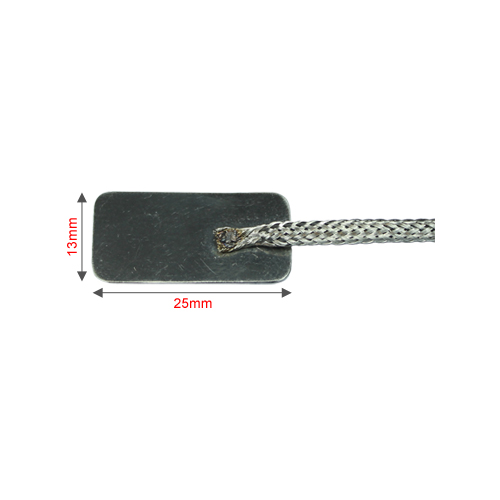
A leaf thermocouple, also known as a thin-film thermocouple, is a type of temperature sensor that uses a thin metallic film deposited on a flexible substrate to measure temperature. It is designed to be thin, flexible, and lightweight, making it suitable for applications where space is limited or unconventional geometries are encountered. Here are the advantages and disadvantages of leaf thermocouples:
Advantages of Leaf Thermocouples: -
1. Flexibility and Conformability: Leaf thermocouples are
highly flexible and can be bent or conformed to various
shapes and surfaces. This flexibility allows for easy
installation on curved or irregular surfaces, making them
ideal for temperature measurement in challenging
environments.
2. Fast Response Time: Due to their thin construction and
close contact with the object being measured, leaf
thermocouples offer a fast response time. They can quickly
detect and reflect temperature changes, making them suitable
for applications that require real-time temperature
monitoring and control.
3. Reduced Thermal Inertia: The thin-film design of leaf
thermocouples results in minimal thermal mass and low
thermal inertia. This property enables them to accurately
capture rapid temperature fluctuations and changes in
dynamic systems.
4. Space-Saving: Leaf thermocouples have a compact and thin
profile, requiring minimal space for installation. They are
well-suited for applications where size constraints or
limited access exist, such as electronic components, small
devices, or tight spaces.
5. Wide Temperature Range: Leaf thermocouples can be
manufactured using various thermocouple alloys, allowing
them to cover a wide temperature measurement range. This
versatility makes them suitable for both low-temperature and
high-temperature applications.
Disadvantages of Leaf Thermocouples: -
1. Fragility: Leaf thermocouples are delicate due to their
thin construction, which makes them more susceptible to
damage from bending, twisting, or excessive mechanical
stress. Care must be taken during installation and handling
to avoid compromising their functionality.
2. Lower Accuracy: Compared to bulkier and more robust
thermocouples, leaf thermocouples may exhibit slightly lower
accuracy. Factors such as their thin-film construction and
potential material deposition variations can contribute to
measurement errors. Calibration and periodic verification
may be necessary to maintain accuracy.
3. Fragile Junction Connection: The connection point between
the thin metallic film and the lead wires can be a potential
weak point. Care must be taken to ensure a reliable and
stable junction connection to avoid measurement issues or
signal interruptions.
4. Limited Durability: Leaf thermocouples may have reduced
durability and resistance to harsh environments compared to
their thicker counterparts. They might be more prone to
damage from temperature extremes, moisture, chemicals, or
physical abrasion. Therefore, their suitability for a
specific environment should be carefully evaluated.
5. Higher Cost: The manufacturing process for leaf
thermocouples involves specialized techniques and materials,
which can contribute to a relatively higher cost compared to
standard thermocouples. Cost considerations should be taken
into account when selecting temperature-sensing options for
a given application.
Applications -
Leaf thermocouples find applications in various industries
and fields where flexible and conformable temperature
sensing is required. Here are some common applications of
leaf thermocouples:
1. Electronics: Leaf thermocouples are widely used in the
electronics industry for temperature monitoring and control
of electronic components and devices. They can be attached
directly to circuit boards, integrated circuits, or other
electronic parts to measure and regulate temperature during
operation.
2. Aerospace: In aerospace applications, leaf thermocouples
are used for temperature measurement in aircraft components,
including turbine blades, engine components, and heat
shields. Their flexibility allows for installation in tight
spaces and conforming to complex geometries.
3. Medical Devices: Leaf thermocouples are employed in
medical devices and equipment where non-invasive temperature
measurement is required. They can be used for monitoring
temperature in medical patches, catheters, or surgical
instruments, providing accurate temperature feedback during
procedures or patient monitoring.
4. Research and Development: Leaf thermocouples are used in
research and development laboratories for temperature
measurement in specialized experiments and test setups.
Their flexibility and small form factor make them suitable
for a wide range of applications, including materials
testing, biological research, and thermal analysis.
5. Automotive: Leaf thermocouples are utilized in the
automotive industry for temperature monitoring in engine
components, exhaust systems, and brake systems. They can
withstand high temperatures and conform to the irregular
shapes of various automotive parts, providing accurate
temperature data for diagnostics and performance
optimization.
6. HVAC (Heating, Ventilation, and Air Conditioning): Leaf
thermocouples are used in HVAC systems for temperature
sensing and control. They can be integrated into ducts,
pipes, or air handling units to monitor temperature
variations and ensure efficient and comfortable heating or
cooling.
7. Energy and Power Generation: Leaf thermocouples find
applications in energy and power generation industries, such
as monitoring temperature in boilers, turbines, and heat
exchangers. Their flexibility allows for easy installation
in confined spaces, ensuring accurate temperature
measurement in critical components.
8. Industrial Process Control: Leaf thermocouples are
employed in industrial process control systems for
temperature monitoring and regulation. They can be used in
manufacturing processes, chemical plants, and refineries to
ensure precise temperature control and optimize production
efficiency.

